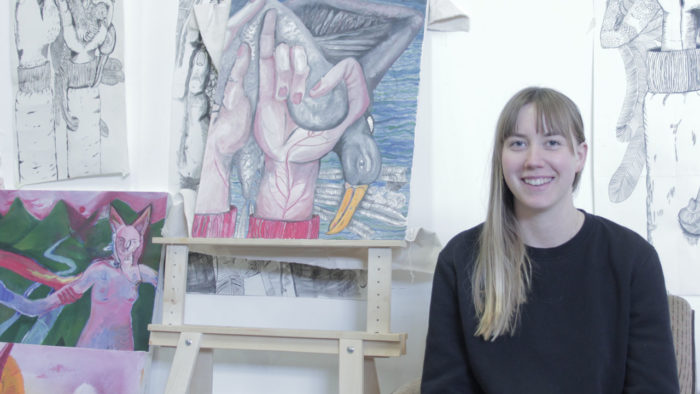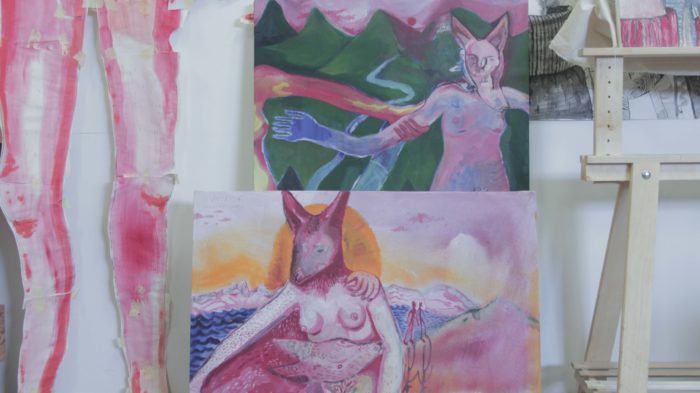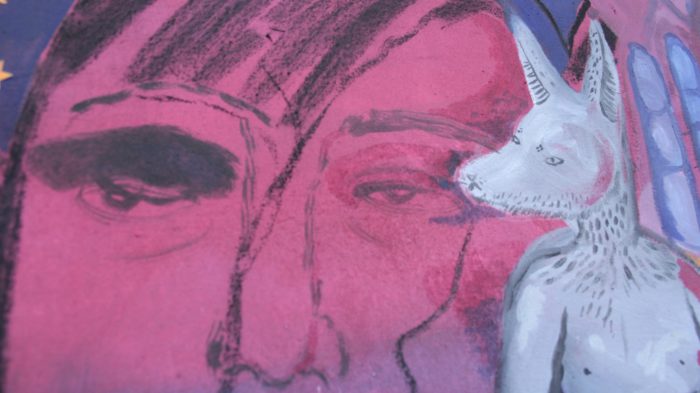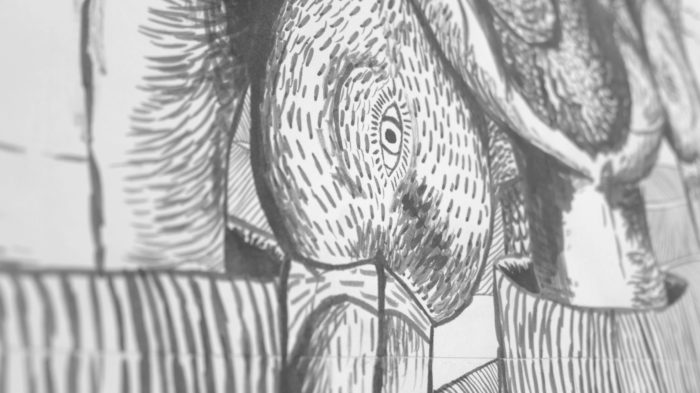Bea May Lucas
March 2, 2020.

Bea May Lucas is a visual artist living and working in the UK. She specializes in figurative paintings, the content of which blurs the lines between reality and fiction, encapsulating the viewer in her imagination. She is interested in animals and animal-human interactions – a relationship between separate species. Her keen interest in animals and animal instincts comes forward within her paintings. Her line of inquiry includes how humans are extremely animistic in many ways. She uses past events and experiences, including emotions she has felt, as source material for her work. Intuitively the work is from a female perspective focusing on how it feels to be a woman; in this sense, her artworks are largely autobiographical. She creates her own world within paintings and uses animal and human characters, representative of different elements of her psyche, to deliver her concepts to her audience.
Bea’s practise consists mainly of large-scale oil paintings on gesso- primed canvas, however, she also builds concepts within the work using a variety of different mediums, on varied surfaces. This includes paintings using oils and acrylic paints on paper, charcoal drawings, ink pen illustrations and murals. She established the loose, direct language of her large-scale oil paintings by reflecting on the way she works quickly on paper in acrylic in a drawing style. She uses many vibrant and vivid colours such as scarlets, pinks, and greens, however, despite her colour choices, the impact of her large-scale works are harmonious instead of chaotic.
Bea likes to think that the viewer has a relationship toward these works because there is a connection towards their own mythology. She wants to express her feelings and views to her audience, and she aims for the viewer to be impacted by her artworks because they can relate to the emotions which are on the animals’ faces. She aims for the viewer to feel a personal relation to her paintings influenced by symbolism within the material.
Check out the interview here:






